The intersection of North 30th and Ames Avenue was an important suburban crossroads in North Omaha as early as the 1890s and going all the way into the 1960s. Then, with white flight in full force and North Omaha divestment underway, the intersection started to struggle. Today, it continues to flounder, but many businesses stay open, overcoming the negative, challenging and demeaning perceptions many Omaha’s have about the community.
Here’s a history of the North 30th and Ames Avenue commercial district.
Butler and Jenetta Streets

In 1854, a group of investors established the town of Saratoga, Nebraska Territory, including all the land in present-day Omaha from Lake Street on the south to Weber Street on the north, and from the river on the east to North 36th Avenue on the west. This included a north-bound road that was original called Butler Street on maps. Today we call it North 30th Street.
The name of the most important east-west street in that early town was Paxton Street, which we call Ames Avenue now. As early as the 1870s, it connected to Commercial Avenue on the east. On the west, it originally ended at North 33rd, where it was called Jenetta Street. By the 1890s, it connected on the west to Ames Avenue, which started at Fontenelle Boulevard, and the whole strip took the name Ames Avenue by the 1880s. While the names changed, today the original streets are called Larimore, Fowler and Meredith Avenues north of Ames Avenue, going along with Taylor, Boyd, Sahler and Sprague Streets on the south.

The Federal Reserve says that a longtime former Ames Avenue stalwart business, the North Side Bank, was founded in 1856. As far as my research shows, that makes that business the longest-lasting in North Omaha.
Way back in 1875, the Sherman Barracks had moved onto land sold to the US government by Augustus Kountze, one of the city’s early moguls. Quickly renamed Fort Omaha, as dozens of buildings were laid out across the 80-plus acres, soldiers and officers moved in. Troops came and went from the fort and when they left, they moved into the surrounding neighborhoods. Both while they were in the service and afterwards, they needed places to spend their money, and the 30th and Ames intersection became one of them.

Another early speculator on this part of the city was James Boyd, future mayor of Omaha and Nebraska governor. He bought the land immediately south of Ames, eventually owning a chunk from North 26th to North 33rd, south to Sprague.
Railway Growth

In the late 1880s, the Missouri Pacific Railroad (MoPac) decided it could rake in profit by installing passenger service around the city of Omaha. The Belt Line Railway opened for service in 1885, and even though its nearest depot was on the outskirts of the 30th and Ames commercial district, it helped the neighborhood grow immensely. For the next 75 years, industrial businesses of all sizes sprung up along the line because of the easy access to the wider markets beyond the city offered by the MoPac connections. The Druid Hill station was nearest, and located at North 31st and Paxton Boulevard.

There was also a large railroad trunk for the Fremont, Elkhorn and Missouri Valley Railroad to the north of the commercial district along the present-day Sorenson Parkway. It was carried over North 30th Street by a trestle starting in the 1910s.
Starting in the 1890s, North Omaha’s population began growing in earnest. Several neighborhoods around the intersection grew rapidly, filling in empty sections that had existed for a dozen years. Monmouth Park, Central Park, Bedford Place, Kenwood / Holy Angels, and the Miller Park neighborhood all grew during this period, while Saratoga continued infilling with homes and businesses.
Scoring a coup over many neighborhoods, on the edge of the commercial district Omaha’s city planners ran two boulevards to connect it with the entire city. The John A. Creighton Boulevard came through Adams Park in the south, and wound to North 31st and Taylor Streets where it met with Paxton Boulevard, which in turn connected the intersection to the emerging Benson district to the west via the Fontenelle Boulevard. 30th and Ames was a very connected neighborhood.

The 1890s were hard times across the United States, including Nebraska. Because of that, the city dreamed up a grand festival to showcase not only local products and services, but to highlight the city’s role as the “gateway to the West.” Taking over North Omaha for nine months in 1898, the Trans-Mississippi and International Exposition succeeded in drawing traffic to many parts of the city, including the 30th and Ames commercial district.

By 1908, the Uncle Sam Breakfast Food Company had two large elevators and a processing plant at North 28th and Sahler Streets, processing their iconic cereal in North Omaha for the next 85 years. That same year, Augustus Storz’s Omaha Brewing Association built a tavern at 30th and Ames, and the intersection was coming into its own.
Kenwood’s Success

By 1910, the intersection at 30th and Ames was fully flourishing. Industries mingled easily with commercial growth, and everyone found their success. Some of the businesses that were established in those early years of the 20th century included Cornwell’s Bar and Grill, and the Commercial Federal Savings and Loan.
The Douglas Motor Company built a manufacturing plant at 4024 North 30th Street in 1918. For the next 50 years, it was a major employer in the community. It was around the same time that Safeway built a store at 4601 North 30th Street.

Holy Angels Catholic Church and School were founded in 1910 at the corner of North 27th and Fowler Avenue. Since the first church was a temporary wooden building, a larger church was built by 1920. The parish also hosted a parochial school for kindergarten through eighth grades.
A public school called Monmouth Park was built at North 33rd and Ames in 1903, designed by major local architect Thomas Rogers Kimball and packed to the gills almost immediately. It was expanded three times by the outbreak of the second world war. The Druid Hill School was constructed in 1917 at North 31st and Paxton Boulevard. The other schools serving the area were North High School at North 36th and Ames, and the former Fort Street Special School for Incorrigible Boys at North 30th and Browne. It was absorbed into Technical High School when it opened in 1923.

The new Ma Bell telephone service brought lines to most houses throughout the area during this era. The North Omaha office was placed on Fowler Street, and housed PLeasant and PRospect, as well as the namesake KEnwood numbers. Also, by 1926 another major employer had moved into the neighborhood.

The Overland Trail Rubber Company factory was located on the southwest corner of North 30th and Taylor Streets for several decades. Its factory was built in 1919, and was later the home of Exide Battery for more than a decade. The Nebraska Power Company, which became the Omaha Electric Company which became OPPD, built a new “transformer house” at North 30th and Larimore in 1907.
Acting like it was bullet proof, 30th and Ames even attracted new businesses during the Great Depression. The Iten-Barmettler Biscuit Company built a new production facility at North 30th and Taylor Streets just south of Ames in 1936. The world’s largest baking ovens were installed there, and it was a major employer in the community for decades. The factory was later owned by several companies, including Merchants Biscuit Company, Orchard & Wilhelm Furniture, and US Mills. Some of the products made there included Supreme Bakers, Keeblers cookies, and Zesta crackers. Girl Scout cookies were made there for a time, too.
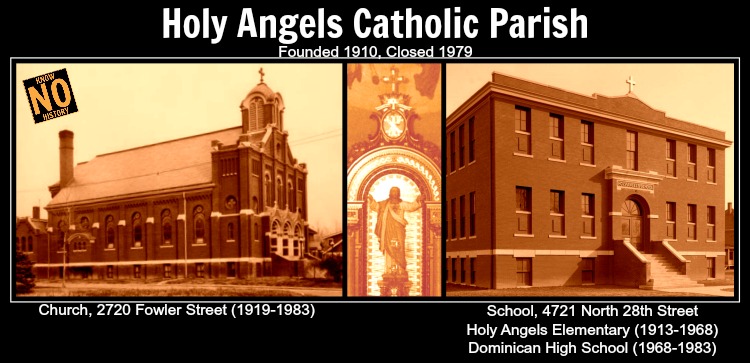
In 1929, J.B. Scannell built a store building at 4519 North 30th Street. By the late 1930s, John Gatchell opened the Gatchell Hardware Store there. It is still operating as of 2023.
In the 1940s, the Orchard and Wilhelm Company built an Art Deco style furniture factory near North 28th and Taylor Streets. In 1893, Charles M. Wilhelm purchased the Orchard Carpet Company and the new firm of Orchard and Wilhelm Company was organized. Although the company exists no more, the building does.
After opening the first North Omaha Library at North 25th and Ames in the 1910s, Omaha Public Library built a new North Branch at North 29th and Ames in 1941.
Post War Boom
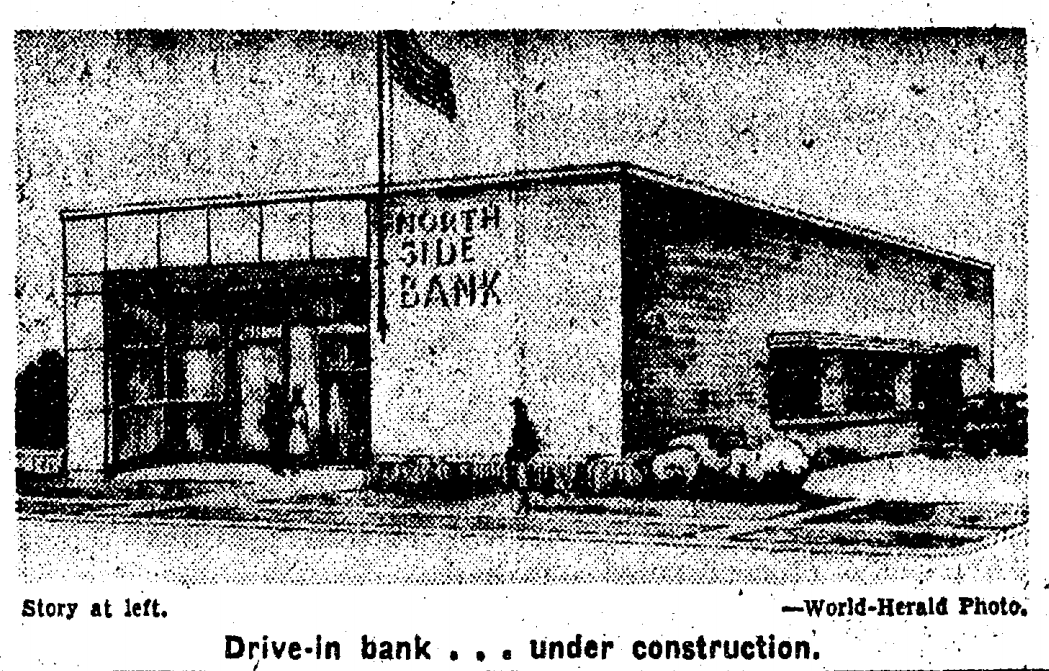
After WWII was over, the intersection of 30th and Ames came into its maturity as an important commercial center in Omaha. Many businesses re-invested, including the Commercial Federal, which built a grand new building on the northeast corner, and Koborg’s gas station, which rebuilt their building on the southeast corner. The North Side Bank was built at North 31st and Ames in the early 1950s, and was joined by the new Phil’s Foodway building that same decade.
From 1950 to 1983, Paul and Arline Murphy ran the Ames Bar and Grill at the intersection of North 30th and Ames. Anchoring the other end of the block was Kenwood Jewelers, which was open from around 1945 through 1981.

Other businesses in the area at this point included the Koffee Shop, a shoe repair store and more. In the late 1940s and early 1950s, a man would park his push cart on the corner and sell tamales for a dime. Hested’s Dime Store and the Kenwood Bakery were quintessential businesses at 30th and Ames. Kenwood Drug Store on North 30th had a soda fountain that many people remember, and the Kenwood Farm Supply and Feed Store was a longtime institution that was open from the 1920s through the 2000s. From 1942 through 1977, the Kenwood Pastry Shop sat along this strip too, teasing generations of children and feeding families breads, desserts and more.

The Beacon Theatre’s popcorn and baby room offer fond memories to some older people. The Beacon Theatre was opened on the corner of North 29th and Ames in the 1920s. In the 1950s, the Beacon was renovated. Owners added a remarkable tall lighthouse out front with a working beacon, and splashed the inside with a nautical theme. It closed permanently in 1966.
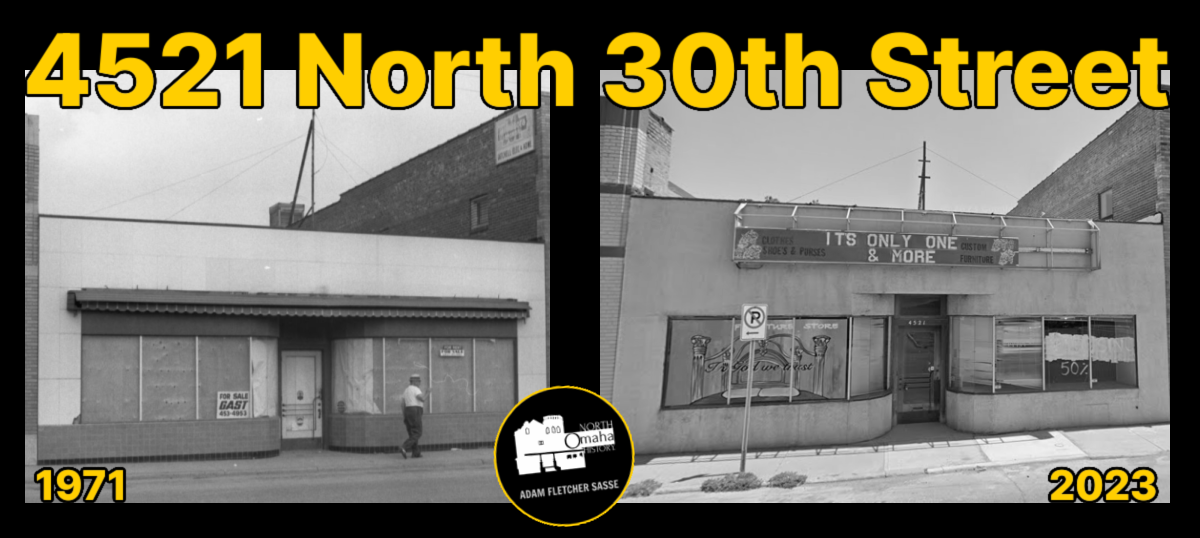
In 1938, Kenwood Drug opened up a new building designed by John and Alan McDonald, two of Omaha’s predominant architects of the era, at 4521 N. 30th St. Owned and operated by E.L. Fogelstrom and H.W. Pederson, the store originally had natural woodwork through, a soda fountain and the latest in technology, including fluorescent lamps across 3,300 square feet of store and storage. After renovating in 1947, the store stayed open until 1967. That year, the building became home to the Davis Paint Company, a Black-owned franchise. After running until 1974, H&R Block tax services opened there. After they moved out, the storefront was home to Cathy’s Clay Cellar, which was open until 1980. It sat empty after that for a few years and has been home to a number of businesses since then. After being home to Joe’s Fashions, a men’s clothing store, as of 2023, its home to a store called “It’s Only One & More.”

Originally located at Florence Boulevard and Ames Avenue, in the 1950s the Burkhard-Gerelick Ford dealership opened a new store at 4719 North 30th Street. Mr. Burkhard originally worked for Russell Motors on Florence Boulevard, later buying the business. He moved it to North 30th, where it stayed into the 1970s.

There was also a Beacon Barbershop and Beacon Grocery, which was at 4622 North 30th in 1950. The Ames Avenue Food Shop was at 3194 Ames Avenue that same year, and the Andy Bly Market was at 2908 Ames Avenue. Craig Grocery was at 2811 Ames Avenue, while Hinky Dinky took over the former Safeway store on the northeast corner of North 30th and Meredith. Safeway had moved closer to Ames, with their store were part of the drive-thru banking was at the Commercial Federal building is at 4503 North 30th, and stayed there into the 1960s when Commercial Federal expanded. Professional offices for family physician Dr. Gilbert and a dentist named Dr. Swoboda were next to the old Post Office on Ames.

Perhaps demonstrating the transient nature of the neighborhood was the Vaughn Van Company and Florence Transfer, which was located on the west side of North 30th and Taylor Streets starting in at least the 1940s. The next era would find their business exploding.
White Flight
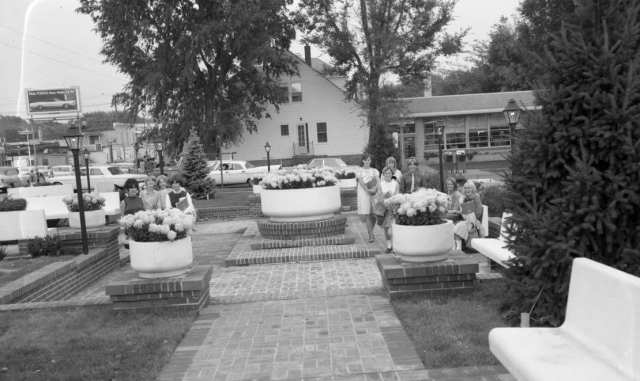
Like a lot of North Omaha, white flight decimated 30th and Ames.
Starting in the 1920s, white people in North Omaha were intentionally and continuously made to fear African Americans by real estate agents and others who would benefit from white people leaving the city’s oldest neighborhoods. And leave they did, especially after the riots in the 1960s.
Suddenly, the once stable and secure working class and middle class neighborhoods surrounding 30th and Ames began transitioning. Businesses where Blacks and whites once co-mingled became more strictly segregated as many white people left the neighborhoods, and businesses that relied on these white populations rapidly closed their doors. Homes that were owned by middle class white families became rentals for working class African Americans. Institutions that needed big populations simply closed their doors.

One of these neighborhood bastions was the Holy Angels Catholic church and school. Dwindling rapidly in membership from the mid-1960s through the 1970s, the parish was closed and merged with Sacred Heart. After a short repurposing as Dominican High School, the complex was one of the hundreds of buildings in the neighborhood demolished to make way for the North Freeway and Arthur C. Storz Expressway. Another institution that was closed was Monmouth Park School, which was shuttered in 1981. The district immediately wanted to tear the building down, but through the work of historical preservation advocates, it was saved and converted into apartments. In 1983, the Monmouth Park Apartments were placed on the National Register of Historic Places.

One of the commercial losses from the neighborhood was Gerelick Ford, which sold cars at North 30th and Meredith Streets. Gerelick was renowned for providing cars for the University of Nebraska Cornhuskers football team in the 1950s and 1960s, and for selling cars to the State of Nebraska for government business. After they left the neighborhood, the lot became Galaxy Motors, which stayed through the 1980s.
Values and perspectives changed throughout the area. Many chains that launched at the intersection in early decades evacuated, including the Hinky Dinky at North 30th and Meredith, which became a laundromat. The Beacon Theatre also closed, along with several other businesses in the area. Herb’s Bar was at the intersection, and Buy Rite Auto Supply moved into the old Hested’s storefront. Cornwell’s Bar and Grill became Murphy’s during this era, too. South of Ames, Cowboy’s Bar and Package became renowned in the 1960s and 70s for selling liquor to minors easily, and the Malibu near it did the same.

As the riots raged around the 24th and Lake Historic District from 1966 to 1969, the 30th and Ames commercial district was hardly scratched by protests or damage. However, economically and spiritually, the neighborhood was filled with a people lost. White flight struck hard and fast, with white homeowners and white business owners fleeing to western suburbs as quickly as possible.
30th and Ames didn’t fall apart just because white people moved away. Instead, the rapid, rampant and continuous divestment of the economic and social stock brought to the area by whites is what blasted this once-grand intersection so badly.
That, and a really poorly considered highway.
Building the Freeway

There needed to be a fast way to move middle class white people through North Omaha without looking at the neighborhoods they grew up in. Enter the North Freeway.
Adversely impacting the 30th and Ames commercial district in almost every measure was the construction of the North Freeway. Cutting north from Lake Street in the 1970s, the State of Nebraska and City of Omaha carefully plotted ways to further decimate the historic Black heart of Omaha. Under the guise of economic development, more than 2,000 buildings, including homes, businesses, churches and more, were demolished from I-480 downtown to the Sorenson Parkway / Arthur C. Storz Expressway. This included more than 200 homes, dozens of businesses, four churches and a school near 30th and Ames.
A 1977 inventory of businesses affected by the construction of the North Freeway in the 30th and Ames commercial district included a t.v. repair shop, an auto parts store, an auto repair shop, a used car lot, a liquor store, an income tax service, two gas stations, an import shop, a barber shop, a fiberglass shop, an iron works company, a propane company, a boat store, a feed store, two auto body shops, a telephone company substation, an attorney’s office, an insurance agent, three apartment complexes and a florist. Many of these business names are included below in the 30th and Ames Historical Directory.
Not only did the construction of the North Freeway directly affect the residential economy reliant on the intersection, it also denigrated the morale and collective spirit of the neighborhood by showing residents, property owners and others they were not as valuable as the easy movement of traffic from downtown Omaha to west Omaha. This siphoning of spirit and ability was completed in the 2000s with the construction of the parkway to North 90th Street. The 30th and Ames commercial district hasn’t been the same since.
Making A Comeback

The intersection of 30th and Ames continues to exist right now, no matter what people think. There have been some struggles in the area, but business goes on, industry still happens, and people still live in the community around the intersection.
All of the old buildings on the northwest corner of 30th and Ames were tore down in the early 1980s, and in 1984, a Burger King restaurant was built there. My family went out to dinner there sometimes, when it was a big deal for us to eat out. The McDonald’s corporation built a fast food restaurant at 30th and Ames in 1989. I remember that was a celebrated occasion by some of my peers at North, who suddenly had a reason to leave school at lunchtime and shop in the surrounding neighborhood (I didn’t need reasons for either). In 1999, SAC Federal Credit Union built a new facility at 3161 Ames Avenue. The Dragon 88 restaurant is at 4528 North 30th, in the former location for the St. Vincent de Paul Thrift Store. In 1996, the North Side Bank, North Omaha’s longest operating business, was bought by American National Bank, which continues operating at North 31st and Ames today.
Today, the former Iten-Barmettler Biscuit Company factory at North 30th and Taylor Streets is used by Omaha Public Schools for storage and as temporary housing for schools getting rebuilt. Its a huge space that’s fortunate to be utilized by the school district, but unfortunately misused in this way. The building’s Art Deco aesthetic demands that it should be a public space with common access, either as commercial property or otherwise.
In the 2000s, Metro Area Transit built a new bus depot at 30th and Taylor, and the Omaha Police Department built a new substation across the street.

Not everything came up roses though. Unfortunately, the historic preservation movement for Monmouth Park School proved ahead of its time, and the building met the wrecking ball after a major windstorm in 1993. The building wasn’t fixed and became run down, and was demolished in 1995. The Druid Hill School faired better though, and in 2002, Omaha Public Schools opened a brand new facility. The historic building stands, too, as a warehousing facility for the district.

People continue moving away from the surrounding neighborhoods to this day, as well. After white flight happened in earnest from the 1960s, the City of Omaha found that middle class African Americans filled the neighborhoods around 30th and Ames. Given the influx of gangs, guns and violence in the area starting in the 1980s, many of these families have been prompted to leave the area, too. A number of houses actually sit boarded up around 30th and Ames, and a large number of old commercial and industrial buildings that survived white flight and the construction of the interstate have been demolished or permanently boarded up. Recently, instead of fleeing because of racism, many people have left for their safety.
Recognizing Historic Value

Perhaps its because of the negative perceptions of this intersection, but the historical integrity of the 30th and Ames historic commercial district is almost completely ignored today.
There are a number of buildings in the 30th and Ames commercial district today that qualify as historically significant and are still largely intact. The Gatchell Hardware building at 4519 North 30th retains its historical commercial vernacular exterior, while the Dragon 88 building across the street hides its historical facade under cheap siding that can be removed to display its historical elements, which I suspect are intact underneath. The one-time Safeway / Hinky Dinky store built in 1927 on the northeast corner of 30th and Meredith is still intact, and Meredith east of North 30th has a few other jewels, including the 1932 building at 2917 Meredith, and the 1934 building across the street. Going further north, the Set Free Church at 4702 N. 30th is in a beautifully interesting storefront that shows its historical character easily. The transformer house built by the Nebraska Public Power Company at North 30th and Larimore is still exquisite, as well.

Another similarly and ironically misused building to the US Mills building is the ABC Supplies Company facility at North 28th and Taylor. While it was built as a furniture manufacturing building in 1946, its Art Deco style would be much better highlighted if it were used for other purposes, perhaps subdivided into offices or renovated into apartments.
Historical appreciation, preservation, sustainability and promotion is an accurate, feasible and highly-necessary way to redevelop North Omaha today. While it won’t fix every problem, as this history of the North 30th and Ames Avenue Historic Commercial District shows, it could address many. I’ve done my part here; now it’s up to community advocates, government officials, and economic leaders to step up to the plate and make something happen.
Will they? Time will continue to tell.
30th and Ames Historic Business Directory
- Ames Bar and Grill, 4502 N. 30th St.
- Beacon Theatre, 2910 Ames Ave.
- Burke and Barry’s Grocery,
- Burkhard-Gerelick Ford, then Gerelick Ford, then Galaxy Motors, 4719 North 30th Street
- Charles B. Washington Branch Omaha Public Library, formerly called the North Branch, 2868 Ames Ave.
- Commercial Federal Savings and Loan, 4503 N. 30th St.
- Cornwell’s Bar and Grill,
- Dewey-Smith Chevrolet, N. 30th St.
- Dial Finance, N. 30th St.
- Dominican High School, formerly Holy Angels School,
- Douglas Motor Factory, 4024 No 30th St.
- Dress Shop,
- Druid Hill School, 4020 N. 30th St.
- Florence Transfer and Vaughn Vans, 4112 N. 30 St.
- Gatchell Hardware, 4519 N. 30th St.
- Hested’s Five and Dime Store,
- Hicks Retinning Company, 2904 Meredith St.
- Holy Angels Catholic Parish, N. 28th Ave. and Fowler Ave.
- Kenwood Jewelry Store,
- Kenwood Pastry Shop, 4508 N. 30th St.
- Kenwood Feed Store, 4801 N. 30th St.
- Kenwood Drug Store, 4521 N. 30th St.
- Kenwood Jewelers, 4528 N. 30th St.
- Kenwood Telephone Exchange Building,
- Koffee Shop, 4515 N. 30th St.
- M. L. Endres Hardware, 2410 Ames Ave.
- Monmouth Park School, 4508 N. 33rd St.
- Nebraska Public Power Company Substation, N. 30th and Larimore Streets
- North Side Bank, 4526 North 30th St.; then 3147 Ames Ave.
- Orchard and Wilhelm Company factory, 2815 Taylor St.
- Overland Trail Rubber Company, 3015 Taylor St.
- Phil’s Foodway, 3030 Ames Ave.
- Safeway Grocery, 4601 N. 30th St., then 4503 N. 30th St.
- Saint Vincent de Paul Thrift Store, 4528 N. 30th St.
- US Mills, 4301 N. 30th St..
- Uncle Sams Breakfast Food Company, N. 28th and Sahler Ave.
You Might Like…
- A History of Druid Hill School
- History of the Bedford Place Neighborhood
- A History of the Collier Place Neighborhood
- A History of Monmouth Park Neighborhood
MY ARTICLES ABOUT THE KENWOOD / HOLY ANGELS NEIGHBORHOOD
STREETS: 30th and Ames Commercial District
BUSINESSES: Beacon Theater | Prairie Park Club | Uncle Sam Breakfast Food Company | Iten-Barmettler Biscuit Company (US Mills) | U.S. Brush Company
NEIGHBORING: Collier Place | Bedford Place | Saratoga Neighborhood | Miller Park | Fort Omaha
OTHER: Holy Angels Parish | Monmouth Park Elementary | Charles Washington Branch Library |
RELATED: Belt Line Railway | North Freeway | Streetcars
MY ARTICLES RELATED TO THE HISTORY OF AMES AVENUE
NEIGHBORHOODS: Saratoga | Collier Place | Monmouth Park
INTERSECTIONS: 30th and Ames | 40th and Ames | 24th Street | North Freeway | Fontenelle Boulevard
BUSINESSES: LaRue’s | Max I. Walker | North Star Theater aka Ames Theater | King Solomon’s Mines aka Shaver’s | Beacon Theater | Parkside Cafe | Ames Plaza | Battiato’s Super Market | Mergen House
PUBLIC PLACES: Ames Avenue Bridge | Saratoga School | Charles Washington Branch Library | Monmouth Park School | North High School | Fontenelle Park
OTHER: Druid Hall | St. Vincent’s Retirement Home | Ames Avenue United Methodist Church | Mergen House
MY ARTICLES ABOUT THE HISTORY OF STREETS IN NORTH OMAHA
STREETS: 16th Street | 24th Street | Cuming Street | Military Avenue | Saddle Creek Road | Florence Main Street
BOULEVARDS: Florence Boulevard | Fontenelle Boulevard
INTERSECTIONS: 42nd and Redman | 40th and Ames | 40th and Hamilton | 30th and Ames | 24th and Fort | 30th and Fort | 24th and Ames | 24th and Lake | 16th and Locust | 20th and Lake | 45th and Military | 24th and Pratt
STREETCARS: Streetcars | Streetcars in Benson | 26th and Lake Streetcar Barn | 19th and Nicholas Streetcar Barn | Omaha Horse Railway
BRIDGES: Locust Street Viaduct | Nicholas Street Viaduct | Mormon Bridge | Ames Avenue Bridge | Miller Park Bridges
OTHER: North Freeway | Sorenson Parkway | J.J. Pershing Drive | River Drive
Elsewhere Online
Bonus Pics!

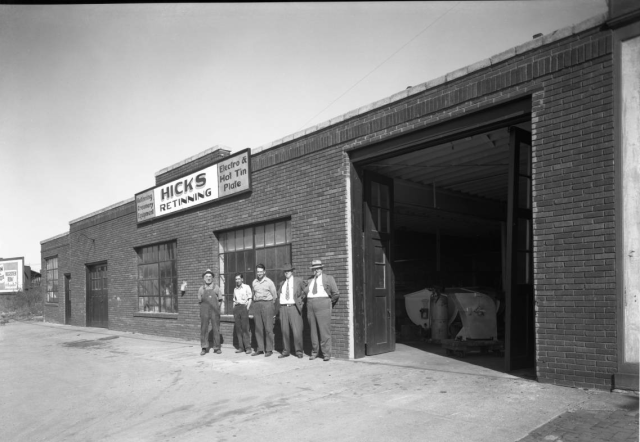
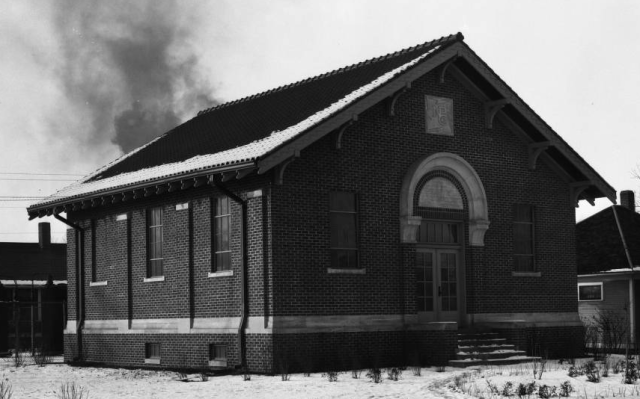

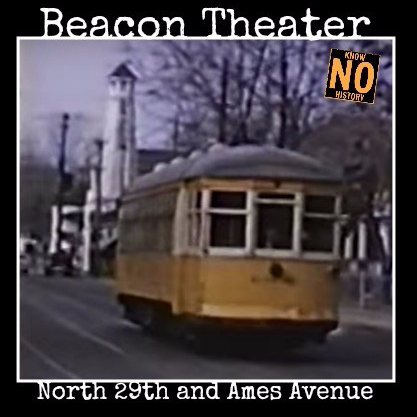

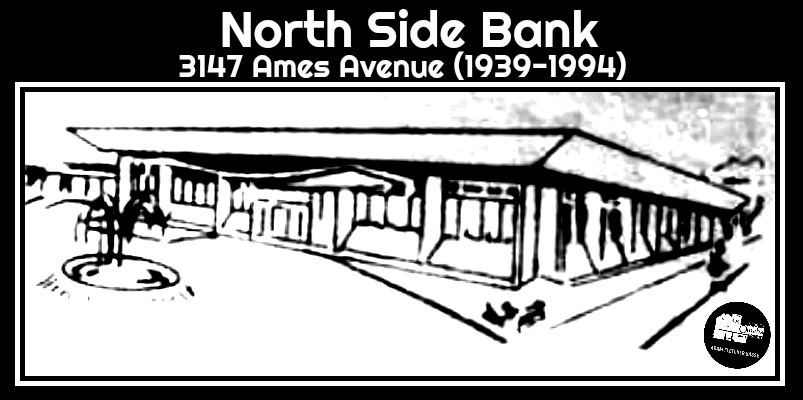
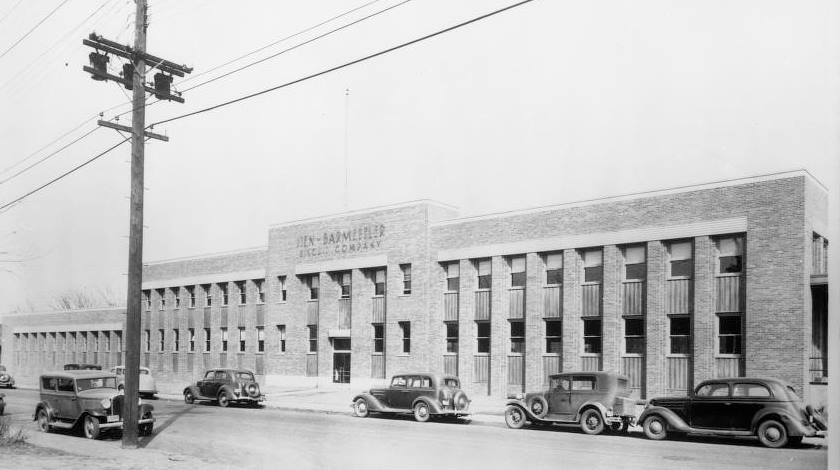





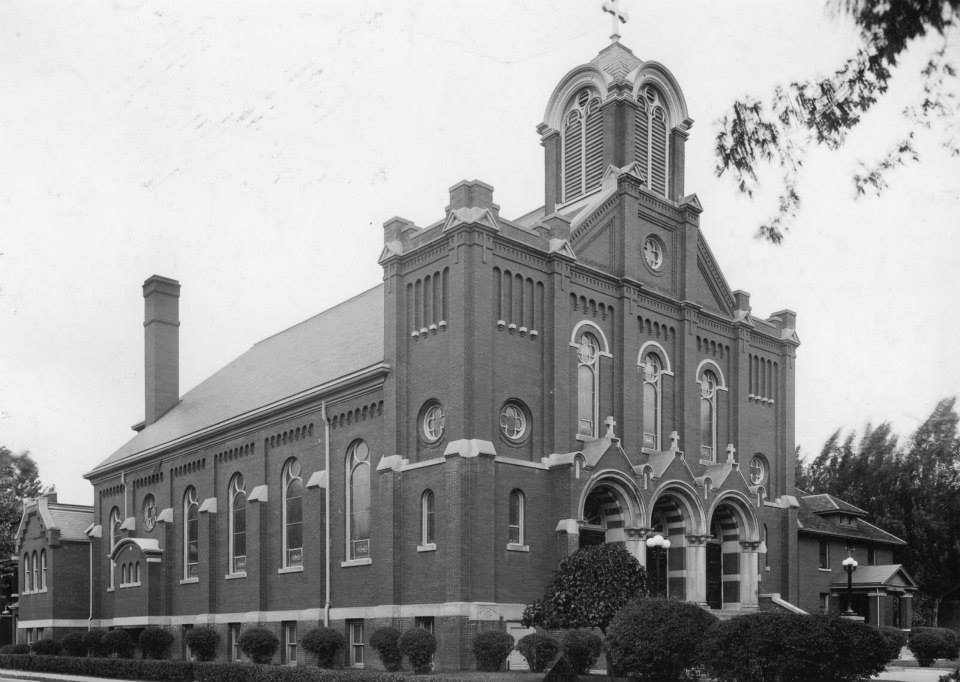







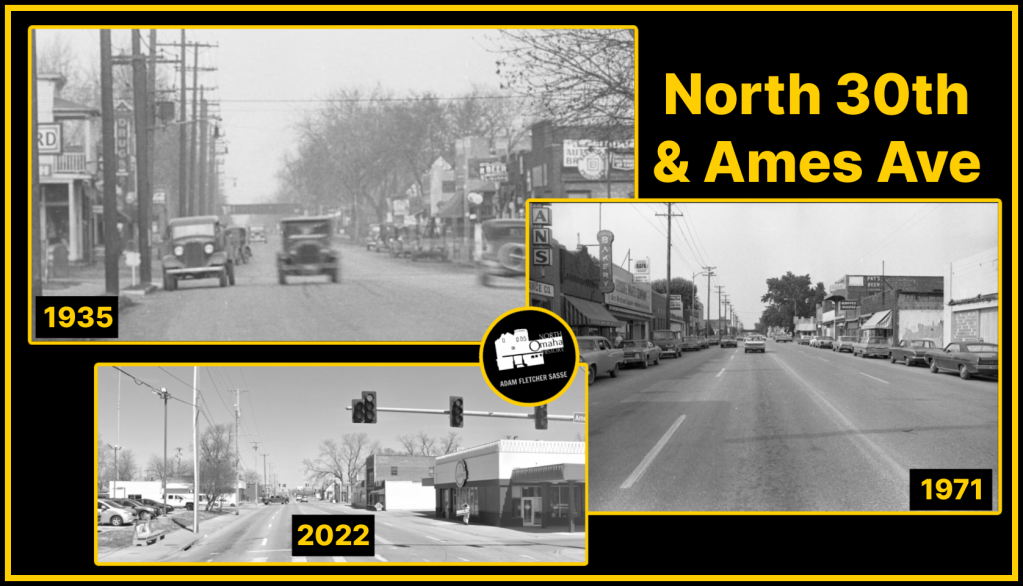
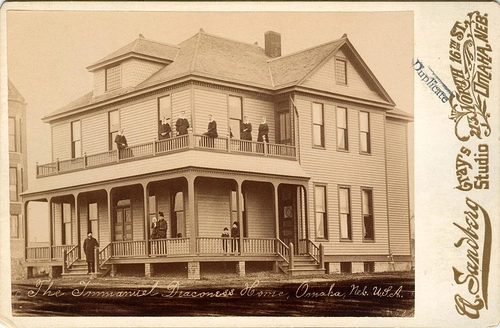

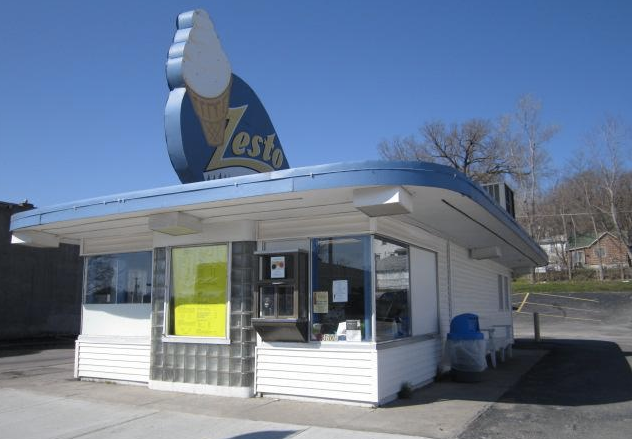
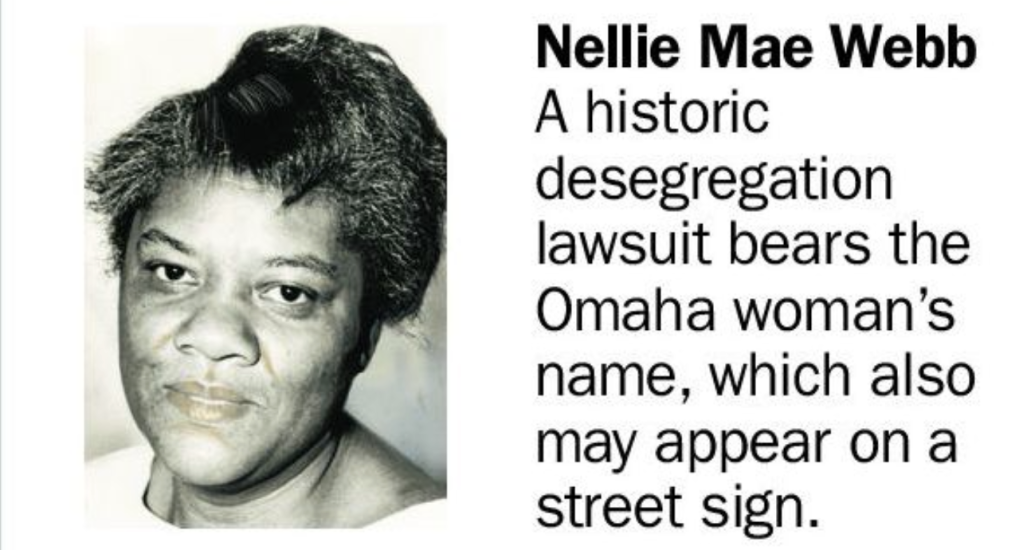
Leave a comment